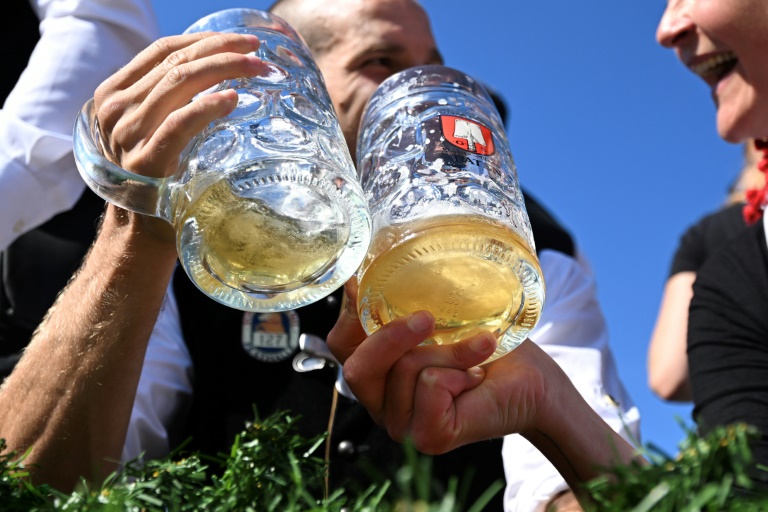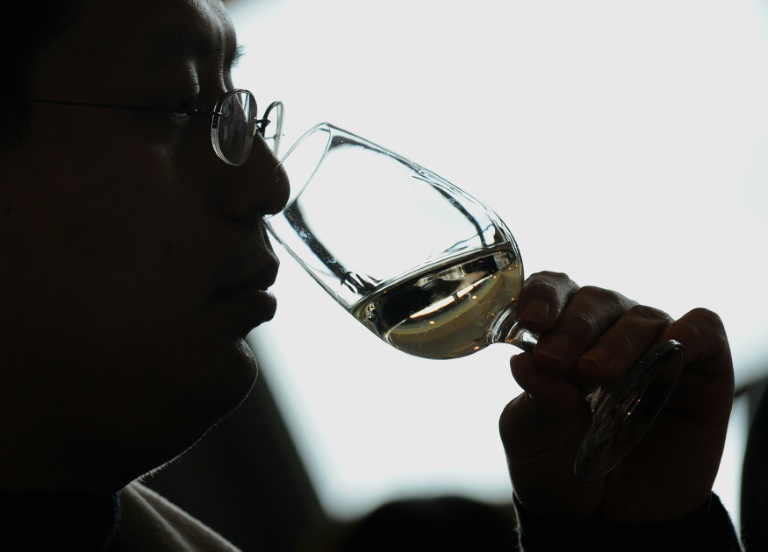Wine bottles on show. Image by Tim Sandle.
Beer and wine have been staples of human history for millennia. These alcoholic beverages are still yielding new surprises. As an example, recent research has highlighted how yeast extracts can cloud lagers, gluten can be quickly detected with a simple test strip, tannins give red wine its lip-puckering edge, and sulfites alter gut bacteria in unexpected ways.
These discoveries not only deepen our understanding of these drinks’ sensory qualities but also hint at implications for health and brewing innovation.
Hazy beer styles are becoming more popular, and their namesake characteristic usually comes from tiny particles made of barley proteins and hop polyphenols.
Alternatively, to produce haziness, researchers have added yeast extracts to two brands of clear lager. The additions made both beverages extremely cloudy because of interactions between ribonucleic acids (RNA) in the extract and proteins in the beer. The researchers say that yeast RNA extracts could be another way to create desirable haziness levels.
 Revellers wearing traditional Bavarian costumes cheer with their beer mugs during the costume parade – Copyright POOL/AFP/File Yuichi Yamazaki
Revellers wearing traditional Bavarian costumes cheer with their beer mugs during the costume parade – Copyright POOL/AFP/File Yuichi Yamazaki
This insight appears in the Journal of Agricultural and Food Chemistry, titled “east RNA–Protein Interactions Generate Beer Haze.”
Like wine, beer can have health benefits when consumed in moderation. Non-alcoholic beers have become wildly popular recently, but are these drinks also healthful? In a pilot study, researchers report that compared to their pre-trial microbiome, men who drank either one alcoholic or non-alcoholic lager daily had a more diverse set of gut microbes, which can reduce the risk for some diseases.
Lateral flow test detects gluten in beer, food
People who want or need to avoid gluten should know whether their drinks are safe to consume. A new lateral flow strip detects this protein in food and drinks, and it is sensitive to concentrations from 0 to more than 20 parts per million (ppm).
The strip’s three lines indicate four ranges below the U.S. Food and Drug Administration’s gluten-free limit (20 ppm), showing results in less than three minutes with 98% accuracy. Researchers demonstrated the device’s effectiveness using real-world samples, including foods labelled gluten-free and a gluten-containing beer.
To find out more, see the Journal of Agricultural and Food Chemistry – “Empowering Gliadin Detection: A Visible-Code Semiquantitative Lateral Flow System for Rapid and Reliable Results.”
Tannins in red wine make you pucker
A recent small-scale study examined why red wine has an astringent taste, often described as drying or lip-puckering. Trained tasting panelists rated red wines with higher tannin content as more astringent.
The researchers found that tannins act like a lid for the tiny aquaporin channels in the tongue and salivary glands, letting water exit more than it enters. They say this discovery helps explain red wine’s drying mouthfeel and enhances the understanding of beverages’ perceived characteristics.
 China imposed tariffs on key Australian exports — such as wine — in 2020 – Copyright AFP/File GREG WOOD
China imposed tariffs on key Australian exports — such as wine — in 2020 – Copyright AFP/File GREG WOOD
The study also appears in the Journal of Agricultural and Food Chemistry, headed: “Astringent Effects of Red Wine Associated with Responses of Aquaporins Found in Human Tongue and Salivary Tissues.”
Wine sulfites change the gut microbiome
Sulfites help wine last longer but can cause headaches or digestive issues for some people. So, researchers studied in lab tests how sulfites added to wine and an ethanol-containing liquid affect gut bacteria. They passed the samples through a three-stage process meant to mimic human digestion.
After digestion, samples with sulfites contained lower amounts of some beneficial bacteria and greater amounts of bacteria related to negative health effects than before digestion. However, the changes were less in the real wine samples, which the researchers say suggests compounds, such as polyphenols, in wine offered slight protection.
The research is titled “May Sulfites in Wine Affect Gut Microbiota? An In Vitro Study of Their Digestion and Interplay with Wine Polyphenols.”